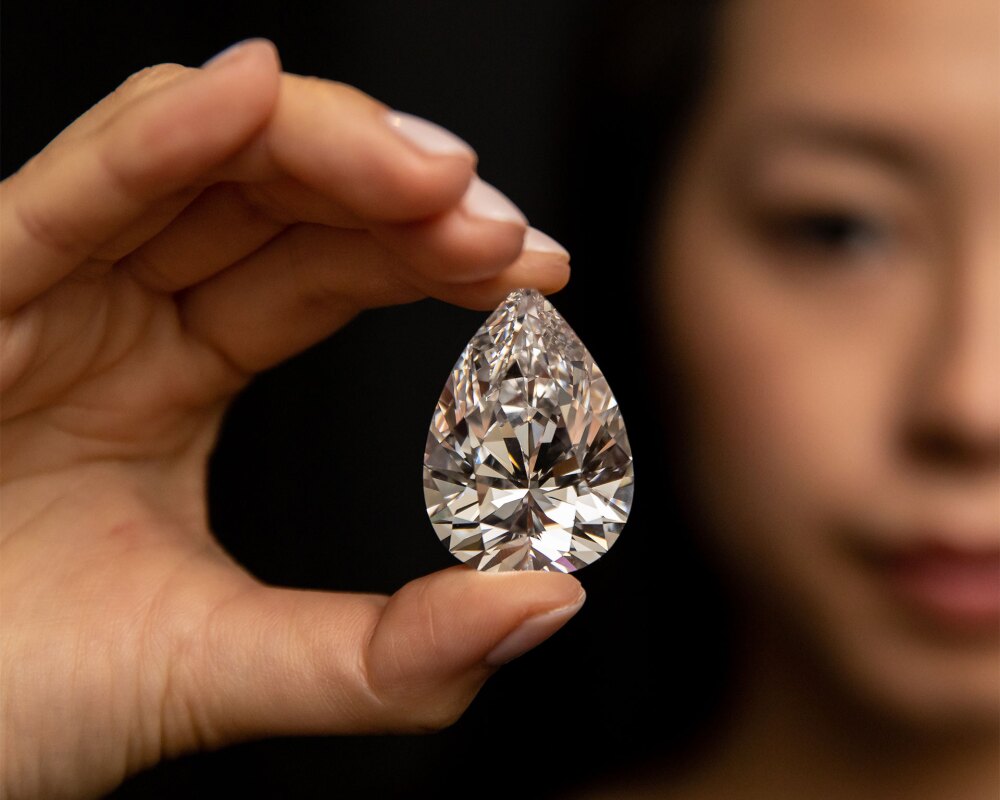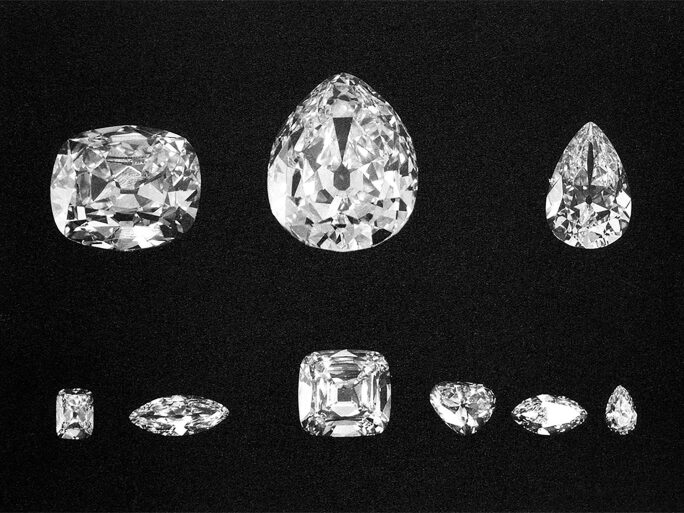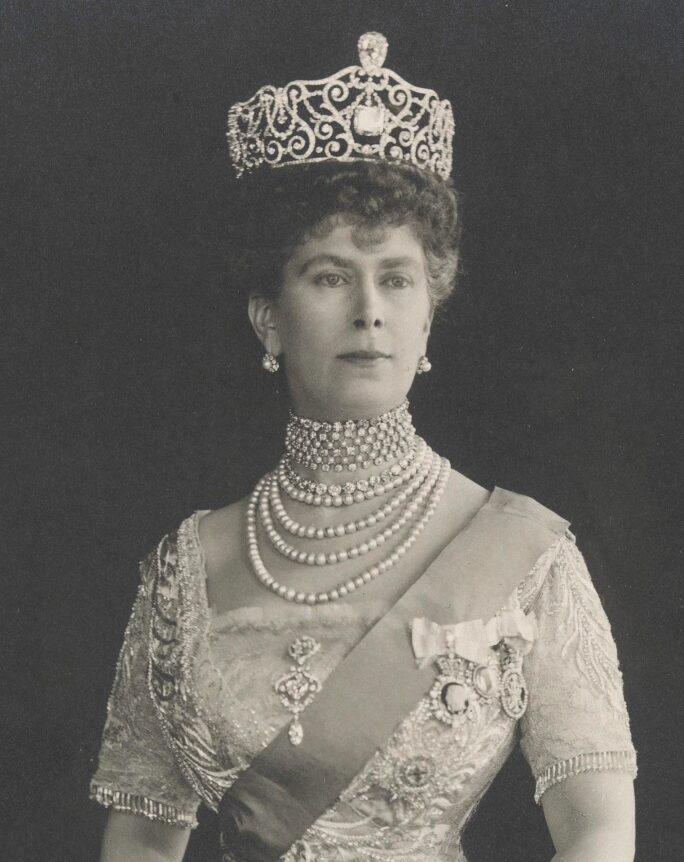D iamonds are nature’s most precious paradox. They endure millennia of heat and pressure to emerge as luminous, near-perfect creations. It is only with human intervention, however, that they realize their full potential. A skilled cutter will tend to the diamond’s scars, tease out a pleasing shape and carefully position its facets to achieve a breathtaking brilliance.
The Juno Diamond is a spectacular expression of this collaboration between man and nature. Named after Juno — the ancient Roman queen of the gods, and goddess of light, youth, motherhood and fertility — the radiant stone’s glacial purity is contained within a voluptuous, exquisitely symmetrical drop. Like its namesake, it is both imposing and majestic while projecting a feminine presence. The beautiful curve of its full 101.41-carat outline enchants the viewer, inviting adoration.

Only eleven “perfect” diamonds weighing over 100 carats have been sold at auction since 1990, and of these, only four have been pear shaped. Boasting the highest possible color grade and an Internally Flawless clarity, the Juno Diamond carries the additional acclaim of being Type IIa, meaning it possesses no detectable traces of nitrogen that could lend it a yellowish tint. Not all D-color diamonds qualify as Type IIa, but those that do present a wonderfully limpid, “whiter than white” appearance.
Indeed, diamonds of such great size and quality are sometimes viewed as specimens, never to be worn. Bigger isn’t always better when it comes to wearability. Unlike round and emerald-cut diamonds, the tapering form of pear-shaped diamonds makes them immune to such limitations. Many of the most important diamonds in history are pear-shaped, including those of royal provenance.

Perhaps the most famous is the Cullinan I, also known as the Great Star of Africa, which is mounted in the Imperial Sceptre of Great Britain and weighs 530 carats. The Sovereign’s Sceptre was originally created by Sir Robert Vyner for King Charles II’s Coronation in 1660 and was renewed in 1911 when King George V instructed the Cullinan I to be mounted at the top of the shaft. In this form, the Great Star of Africa is not so much worn as it is displayed. The pear-shaped, 94-carat Cullinan III, however, forms the pendant to the Cullinan IV and presently enjoyed as a brooch by Queen Elizabeth II.

Other historical pear-shaped diamonds include the Sancy, the Arcots and colored diamonds such as the Dresden Green and the Farnese Blue, sold by Sotheby’s Geneva in 2018.
Relatively modern examples of important pear-shaped diamonds include the Taylor-Burton Diamond. This 69-carat gemstone was the most expensive publicly sold jewel of its time in 1969. The auction, held by Sotheby’s Parke-Bernet, was originally won by Cartier, but Richard Burton was so furious to be outbid that he insisted he would buy back the diamond at any cost. As he put it, it should be “on the loveliest woman in the world.” He purchased the diamond from Cartier one day later, and the diamond was famously worn by Elizabeth Taylor at Princess Grace of Monaco’s fortieth birthday and the forty-second Academy Awards.
Like the Taylor-Burton diamond, the Juno Diamond begs to be suspended from a stunning necklace crafted by one of the world’s great jewelry houses. Held in the same private collection for more than twenty years, this stone of formidable grace is far more than the ultimate wearable asset. As its name suggests, the Juno belongs among the pantheon of the world’s greatest diamonds, just as its namesake reigns supreme among the gods. It is borne of the earth, nurtured by man and nothing short of heaven.


